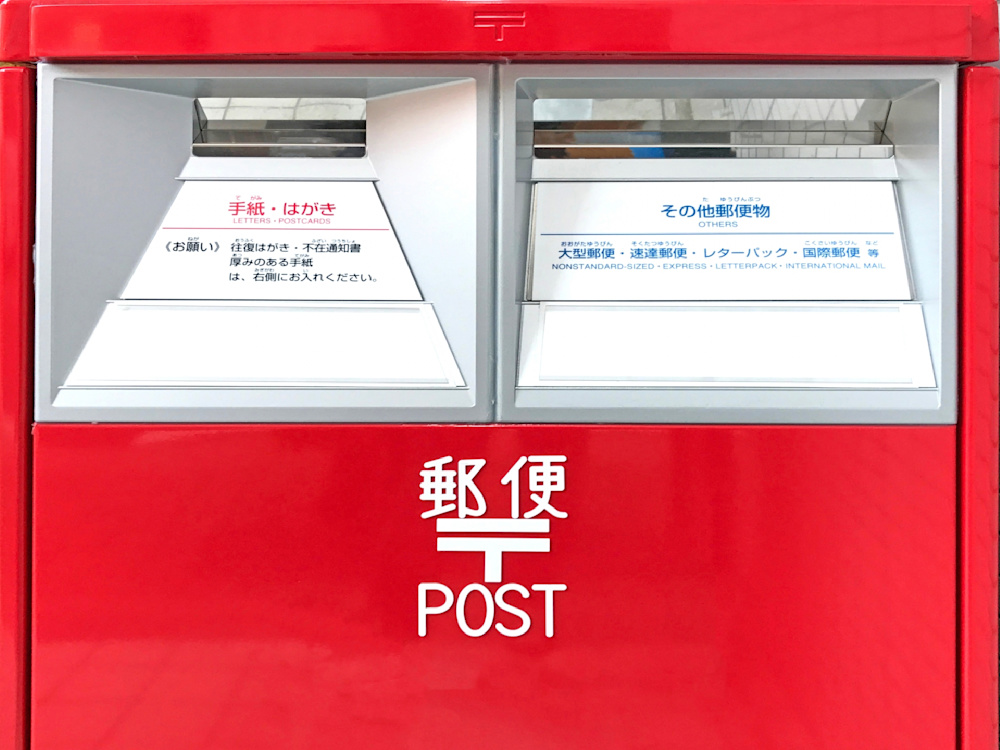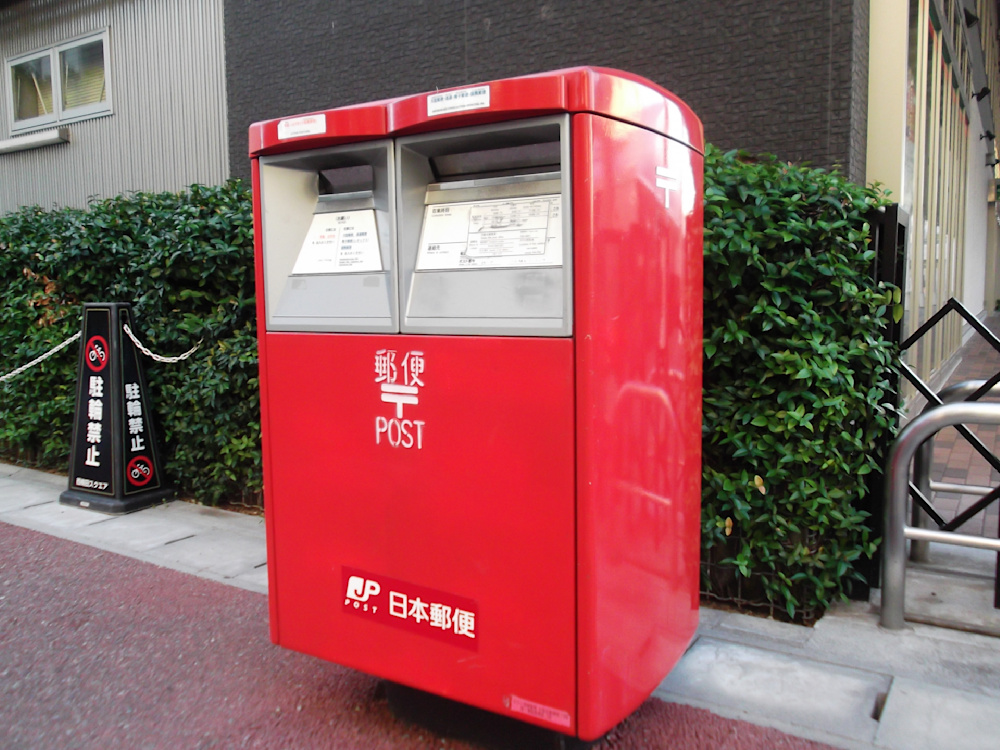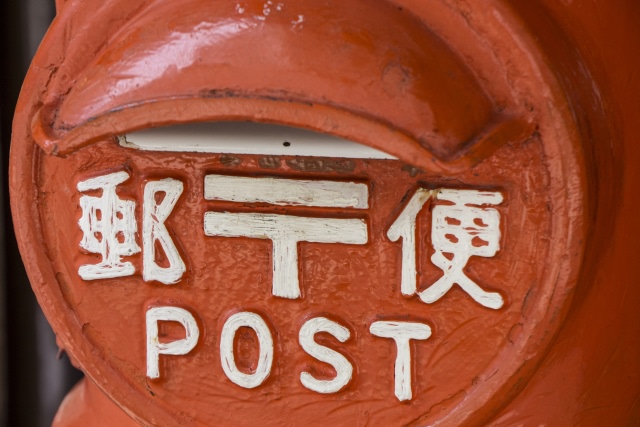Updated October 27, 2025
All About Japan Post: Tips to Navigate Japan's Postal System
Japan Post is one of the most reliable postal services in the world.
Whether you're sending a postcard to family back home or mailing important documents, the system is efficient and dependable. It’s partially owned by the public and offers a wide range of services beyond basic letter delivery.
This guide explains everything you need to know about sending mail in Japan, including service options, handling missed deliveries, and essential Japanese vocabulary for post office visits.
In this article: 📝
An Introduction to Japan Post: More Than Just Mail
Japan Post isn't just a postal service. Known as 日本郵政 (Nippon Yūsei) in Japanese, it's actually a massive conglomerate that was born out of the privatization of Japan's state postal system back in 2007.
The organization handles mail services, banking, and insurance all under one roof.
When you need a post office, search for 郵便局 (Yuubinkyoku). With around 24,000 locations across Japan, you'll find these red-and-white buildings pretty much everywhere, mainly near train stations, in shopping districts, and scattered throughout residential areas.
So, whether you're in central Tokyo or a rural mountain village in Japan’s inaka, there's likely a post office within walking distance.
Most Japan Post offices operate Monday to Friday, 9 AM to 5 PM for mail services, though larger branches often stay open until 7 PM.
Japan Post Services, Explained: How to Send Mail in Japan and More
Japan Post offers several services, each designed for different needs and priced accordingly.
Letter Pack: The Simple Solution
Letter Pack (レターパック) is perfect for documents and lightweight items up to 4kg. This flat-rate service comes in two versions and is one of the most popular options for everyday mailing.
Letter Pack Plus is the first option. It costs 600 yen and requires signature confirmation upon delivery. This one is ideal for important documents like job applications, contracts, or anything valuable that needs secure handling.
For anything else, Letter Pack Light should do the trick. This cheaper option costs only 430 yen and goes straight into mailboxes, making it great for non-critical documents, casual correspondence, postcards, or small gifts.
The best part about the Letter Pack option is its simplicity. Buy the special envelope at post offices or convenience stores, fill in the addresses, insert your items, and you're done. No additional stamps needed, and tracking comes included. You can even drop Letter Pack items in regular postboxes you’ll see around your neighborhood.
When mailing letters or postcards, just write your message, attach proper postage, and use any red postbox. Just check the signs and make sure you're using the correct slot. Domestic mail goes in one opening, while international and/or express mail goes in the other/s.
Yu-Pack: Heavy-Duty Shipping
If you have a parcel to ship, this is your first option. Yu-Pack (ゆうパック) handles heavier stuff, more specifically, packages up to 170cm total dimensions and 25kg in weight.
If you need to send something heavier (up to 30kg), there's also a special “Weighted Yu-Pack” service available.
Pricing depends on size and destination, with seven size categories from 60cm to 170cm. What you get with this service includes delivery date scheduling within 10 days, choice of six time slots, full tracking, and even compensation coverage for up to 300,000 yen.
You can send Yu-Pack from post offices, convenience stores, or request a pickup service from the comfort of your home. For expats dealing with shipping larger items around Japan, the Yu-Pack option often beats private courier services in terms of both price and reliability.
Express Mail: When Time Matters
Express Mail (速達) is a special service that speeds up delivery for any mail type, be it letters, postcards, Letter Pack, or Yu-Pack.
The key requirement here is proper marking: You’re expected to draw a red line on the right side of horizontal items or the upper right of vertical ones.
Express items must go to postal counters or designated postboxes. Regular postboxes won't handle express mail properly, so don’t count on the closest postbox to drop your parcel.

Registered Mail: Maximum Security
Registered Mail (書留) provides the highest security level with three options.
Ordinary Registered Mail tracks every step and offers up to 5 million yen compensation.
Currency Registration is specifically for handling cash shipments. This is also commonly used to send congratulatory or gift money, which are Japanese traditions. For this, they use special envelopes that fit exactly the size of the exclusive Currency Registration mail envelopes.
Finally, Simplified Registration costs less, but limits compensation to 50,000 yen.
Many expats use Registered Mail for sensitive documents such as job applications, banking information, My Number Card details, or pension paperwork. Some Japanese employers specifically require this security level for personal information.
Registered mails are also delivered on Saturdays, Sundays, and holidays, making this an immediate solution to various urgencies.
Additional Specialized Services
Japan Post offers some additional services that are worth mentioning.
For instance, Delivery Date Specified Mail lets you schedule exact arrival dates using special stickers available at post offices. This service also provides legal proof of sending times, delivery confirmation, or document contents.
For food items, Refrigerated Yu-Pack maintains cold temperatures throughout delivery. This service works great for sending fresh foods or temperature-sensitive items to friends and family.
You can find a full list of additional services along with their pricing on Japan Post’s official website.
Banking and Insurance Services
As we mentioned, Japan Post isn't just about mail. It's also one of Japan's major financial service providers. If you need basic financial services such as banking or insurance, you’ll be glad to know that post offices offer access to both.
Banking Services Offered at Japan Post
Japan Post Bank is often the most accessible option for foreigners opening their first Japanese bank account.
Unlike many traditional banks, Japan Post Bank doesn't require a six-month residency period, making it perfect for newcomers to Japan. You can open an account with just your passport, residence card, and a small initial deposit.
The bank provides standard savings accounts, and its ATM network is massive. You'll find Japan Post Bank ATMs at post offices nationwide, plus many FamilyMart convenience stores.
These ATMs accept international cards (Visa, Mastercard, JCB, and others) and offer English-language menus, making cash withdrawals easy for foreign residents.
Insurance Services Offered at Japan Post
Japan Post Insurance offers life insurance products, focusing primarily on endowment and whole life insurance.
With nearly 90% of Japanese households carrying some form of life insurance, Japan Post Insurance provides simple, easy-to-understand policies with smaller coverage amounts compared to your average insurance company.
You can sign up for insurance at any post office counter, or even arrange for a representative to visit your home for the application process. While not immediately essential for short-term visitors, these services are quite valuable for long-term residents establishing financial relationships in Japan.

Post Box Colors: Japan’s Iconic Red Mail Boxes
Here's something that trips up many newcomers: Japan uses color-coded postboxes, and using the wrong one can delay your mail indefinitely.
As a rule of thumb, always use red postboxes for regular mail. These are pretty much everywhere, and you’ll find them outside convenience stores, near post offices, at city halls, and on street corners. They are iconically Japanese, and you’ll even find decorated ones in some special spots.
White postboxes serve various specific purposes and aren't for general mail use. So, stick with red boxes to ensure that your mail is handled duly and properly.
Handling Missed Deliveries Like a Pro: JP Post Redelivery
Missing package deliveries happen to everyone, especially if you work typical business hours. The Japan Post redelivery service is surprisingly easy, with multiple convenient options available.
When a delivery fails, you'll find an undeliverable item notice (便物等ご不在連絡票), which is a pink slip with all the essential information, such as the tracking number, delivery attempt date, sender details, and redelivery instructions.
You have three main options for requesting redelivery, but the easiest method for English speakers is using Japan Post's online form.
All you need to do is enter your tracking number and select your preferred delivery dates and times.
The second option uses the LINE app by scanning the QR code on the notice you received. This works well, but requires you to be comfortable with at least basic-level Japanese.
Finally, the third method involves calling their automated phone system, though this requires understanding Japanese voice prompts.
For same-day redelivery, submit requests before 5 PM. Otherwise, you can schedule your delivery for any convenient time within the 15-day holding period. You can also collect packages directly from post offices by bringing the notice and ID, which is sometimes faster than waiting for Japan Post redelivery.
Forwarding Service Japan: Mail Forwarding with Japan Post
Japan Post’s forwarding service is a lifesaver for expats who move regularly or are transitioning between apartments. You can simply submit a form, and Japan Post redirects mail from your old address for one full year at no charge.
To do this, you’ll have to visit your local post office with identification and proof of your previous address (driver's license, residence card, etc.). Make sure to fill out the relocation form with both addresses. Japan Post may verify the move through site visits or confirmation mail, so handle this well before moving.
This service covers most mail types and prevents you from missing important documents, bank statements, or government correspondence during transitions. The forwarding expires after one year, so update your address with all organizations before then.
When Things Go Wrong: Fixing Mistakes
Did you realize you made an error after dropping off your mail? No need to panic! Japan Post can often help if you act quickly.
First things first, visit the post office where you submitted the item as soon as possible. Bring receipts or tracking information. If your package hasn't left the facility, staff might retrieve it for corrections. But once dispatched, your options become way more limited.
Also, keep in mind that address corrections or service changes might require additional fees. Sometimes items may also need to be returned to you for correction and resubmission. The key here is speed, so check for mistakes early on so nothing gets delayed.
Essential Japanese Phrases to Use at The Post Office
While post office staff are generally patient with foreigners, basic Japanese phrases can make transactions much smoother. Knowing what to say in certain situations can also build your confidence as a foreign person living in Japan, so here are some useful ones.
For service requests:
これを送りたいんですが (Kore wo okuritain desu ga) - "I want to send this"
切手をください (Kitte wo kudasai) - "Stamps, please"
書留でお願いします (Kakitome de onegaishimasu) - "Registered mail, please"
Some common questions you'll hear at the post office:
中身は何ですか (Nakami wa nan desu ka) - "What's inside?"
配達日のご希望はありますか (Haitatsu-bi no go-kibou wa arimasu ka) - "Preferred delivery date?"
And here are some useful responses for these:
書類です (Shorui desu) - "Documents"
服です (Youfuku desu) - "Clothing"
いくらですか (Ikura desu ka) - "How much?"
Finally, here’s some key vocabulary you can learn to make your post office experience smoother:
郵便局 (Yuubinkyoku) - Post office
手紙 (Tegami) - Letter
小包 (Kozutsumi) - Package
住所 (Juusho) - Address
追跡番号 (Tsuiseki bangou) - Tracking number

Pro Tips for How To Send Mail in Japan Post
Learning the relevant Japanese vocabulary is a good start, but we have a few more tips to make your Japan Post interactions smoother and more efficient.
First off, come prepared. Package your items before arriving at the branch, bring proper ID, and write addresses clearly in both English and Japanese when possible.
For complex international shipping or specialized requirements, larger post offices typically have more English-speaking staff and work extended hours.
If you use Letter Pack mail a lot to send documents, consider buying Letter Pack envelopes in advance from convenience stores. Having stamps on hand is also convenient for quickly mailing letters without visiting any counters.
Finally, keep all receipts and tracking numbers until your mail or parcel is delivered successfully. Japan Post's tracking system is excellent, but nothing beats physical records and evidence when a dispute arises.
Conclusion on How to Send Letter in Japan
Japan Post is one of the world's most reliable postal systems. From Letter Pack's document convenience to registered mail's security features, there's an appropriate service for any need.
Important documents can be sent via registered mail with security and tracking options. Regular correspondence works perfectly with standard mail and proper postage, while packages and gifts benefit from Yu-Pack's reliability and reasonable pricing.
Post office staff generally show patience with foreigners, especially when you make communication efforts. Don't hesitate to ask questions or request clarification, as most workers appreciate customers who want to use services correctly.
With this guide and some practice, you'll master Japan's postal system quickly. If you have questions about other basic services in Japan, check out our posts on moving in Japan or using trash cans.
Get Job Alerts
Sign up for our newsletter to get hand-picked tech jobs in Japan – straight to your inbox.








